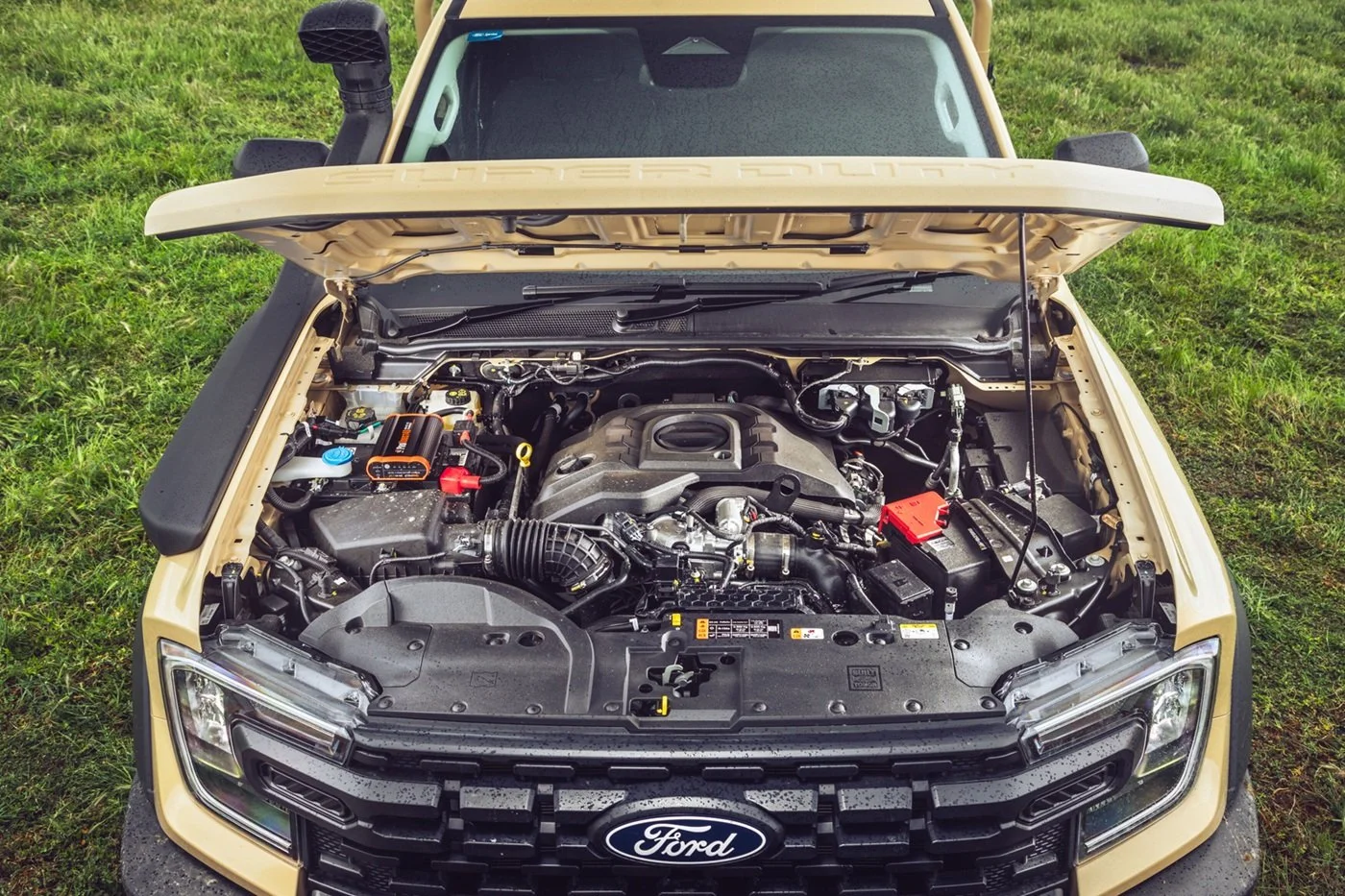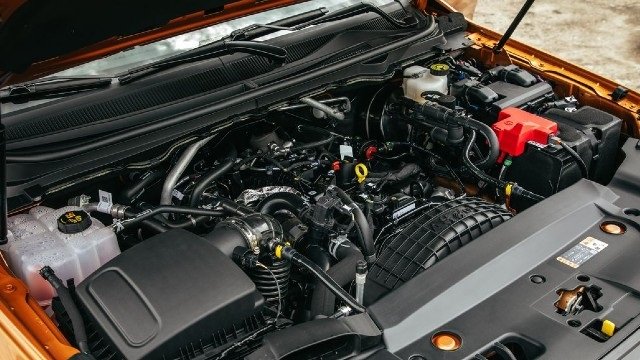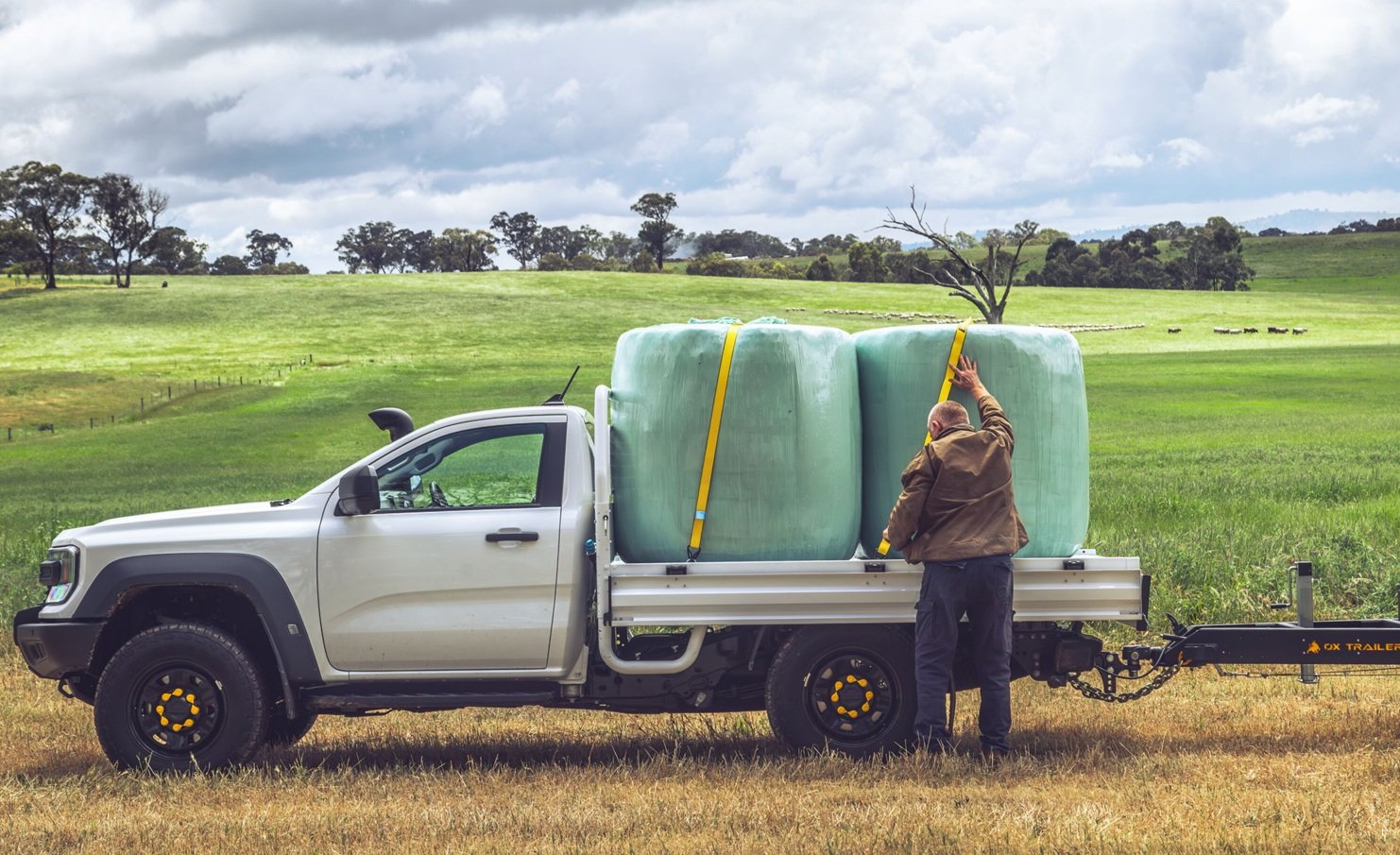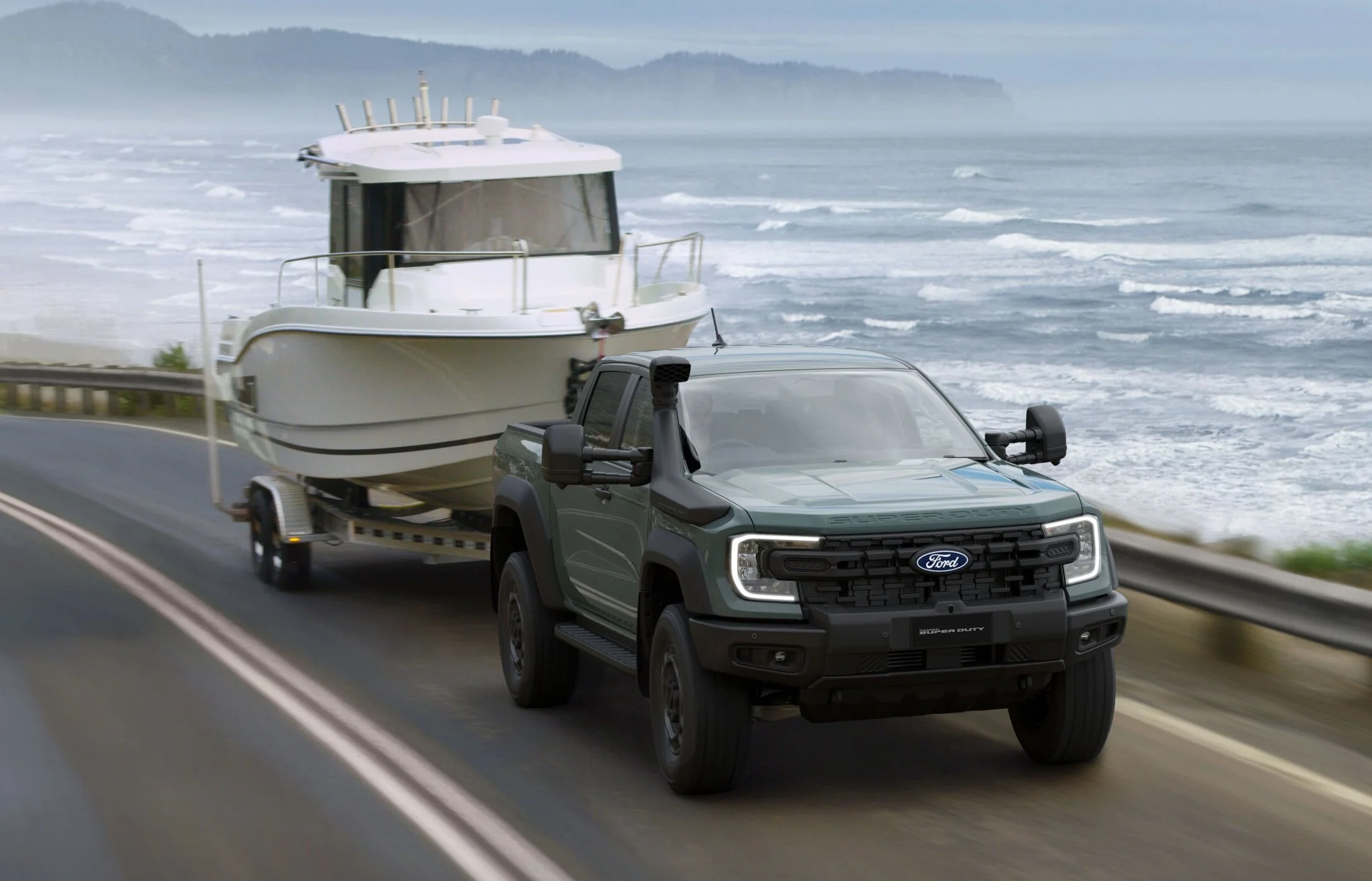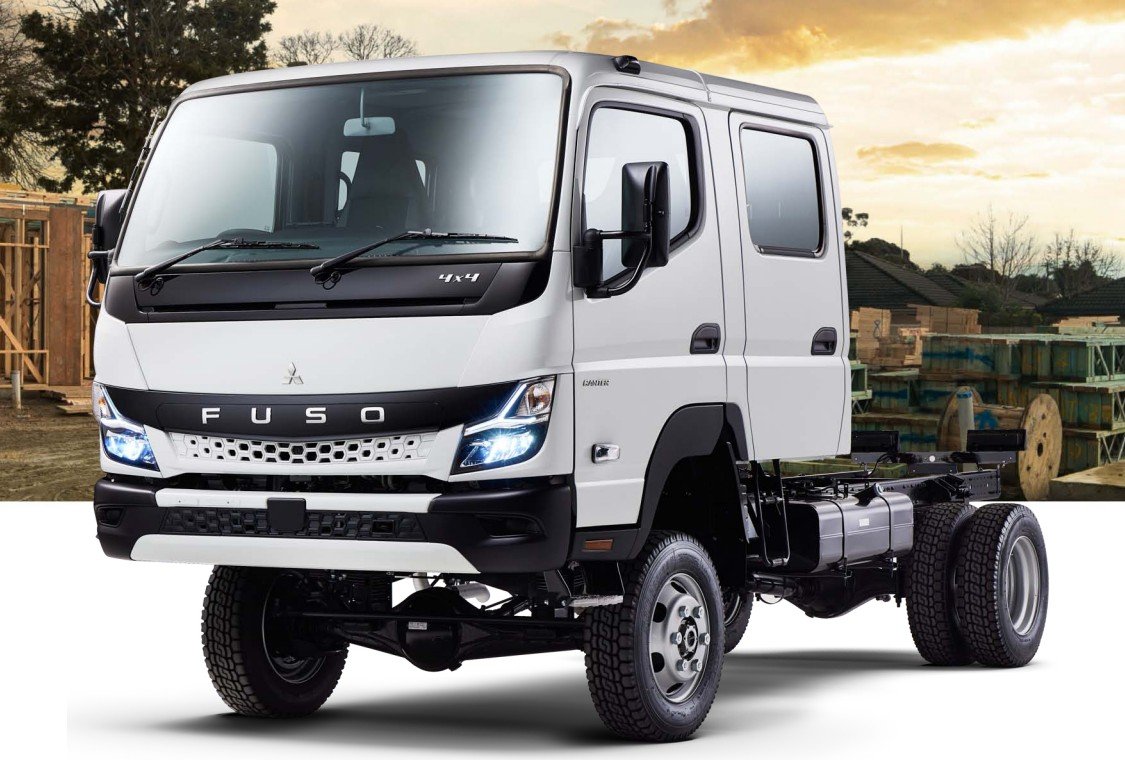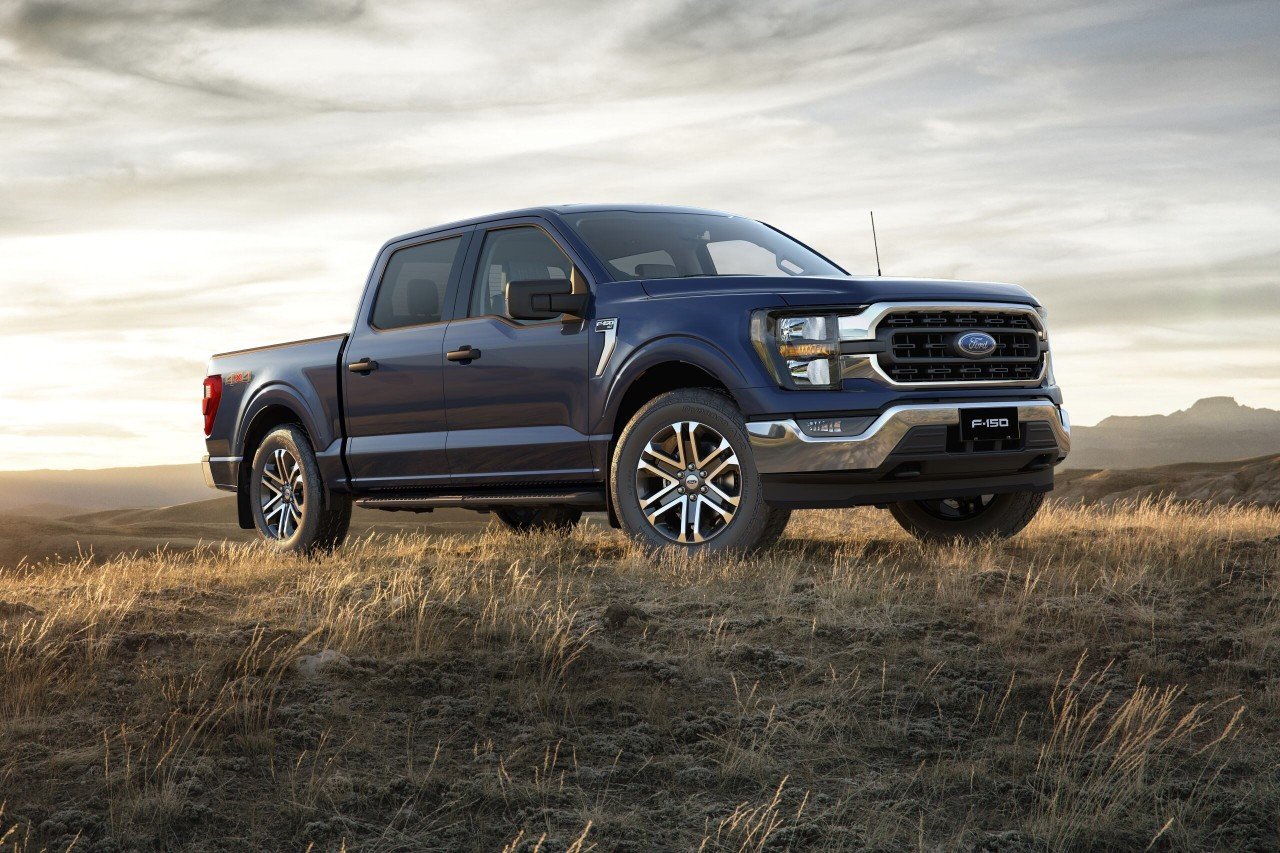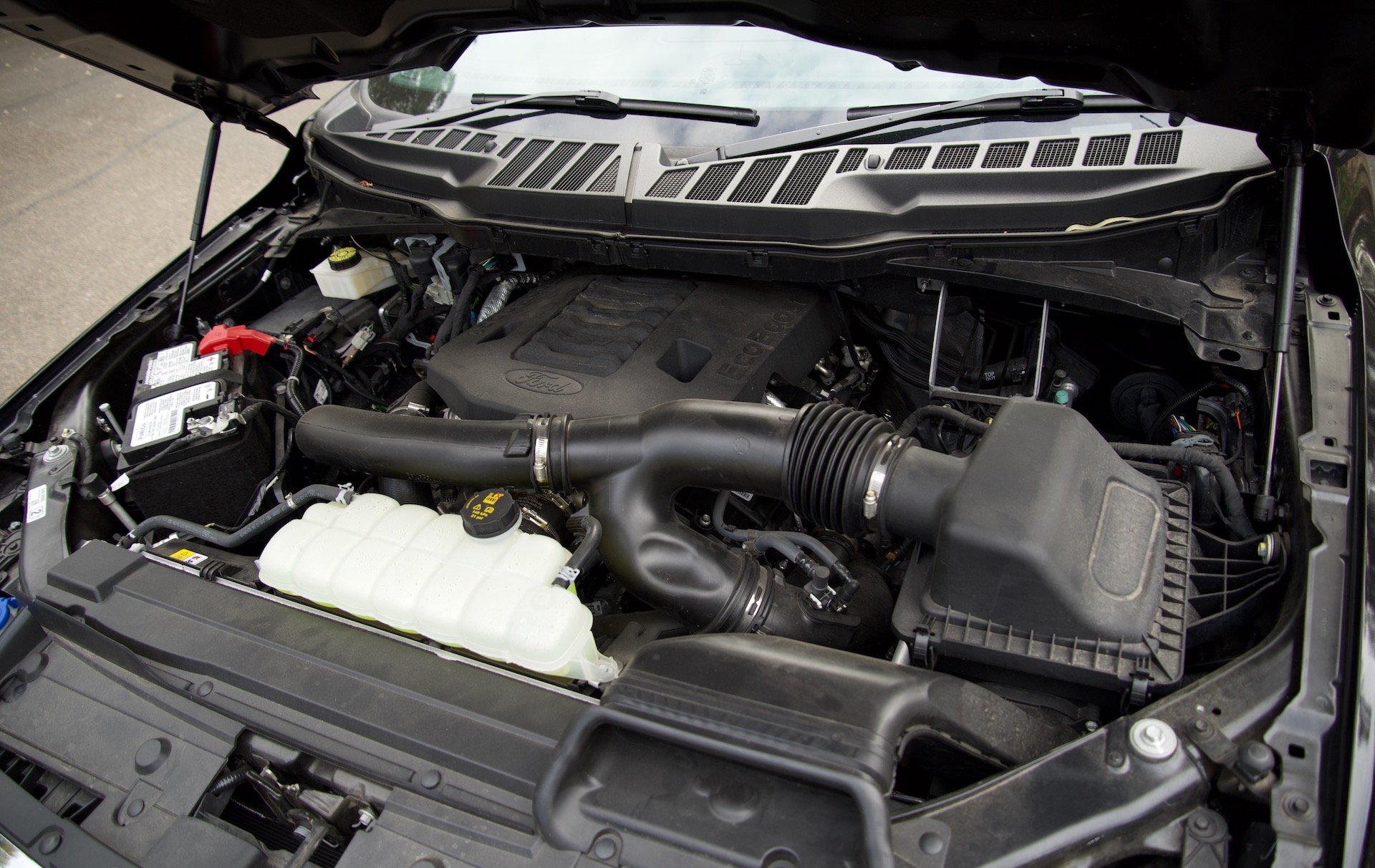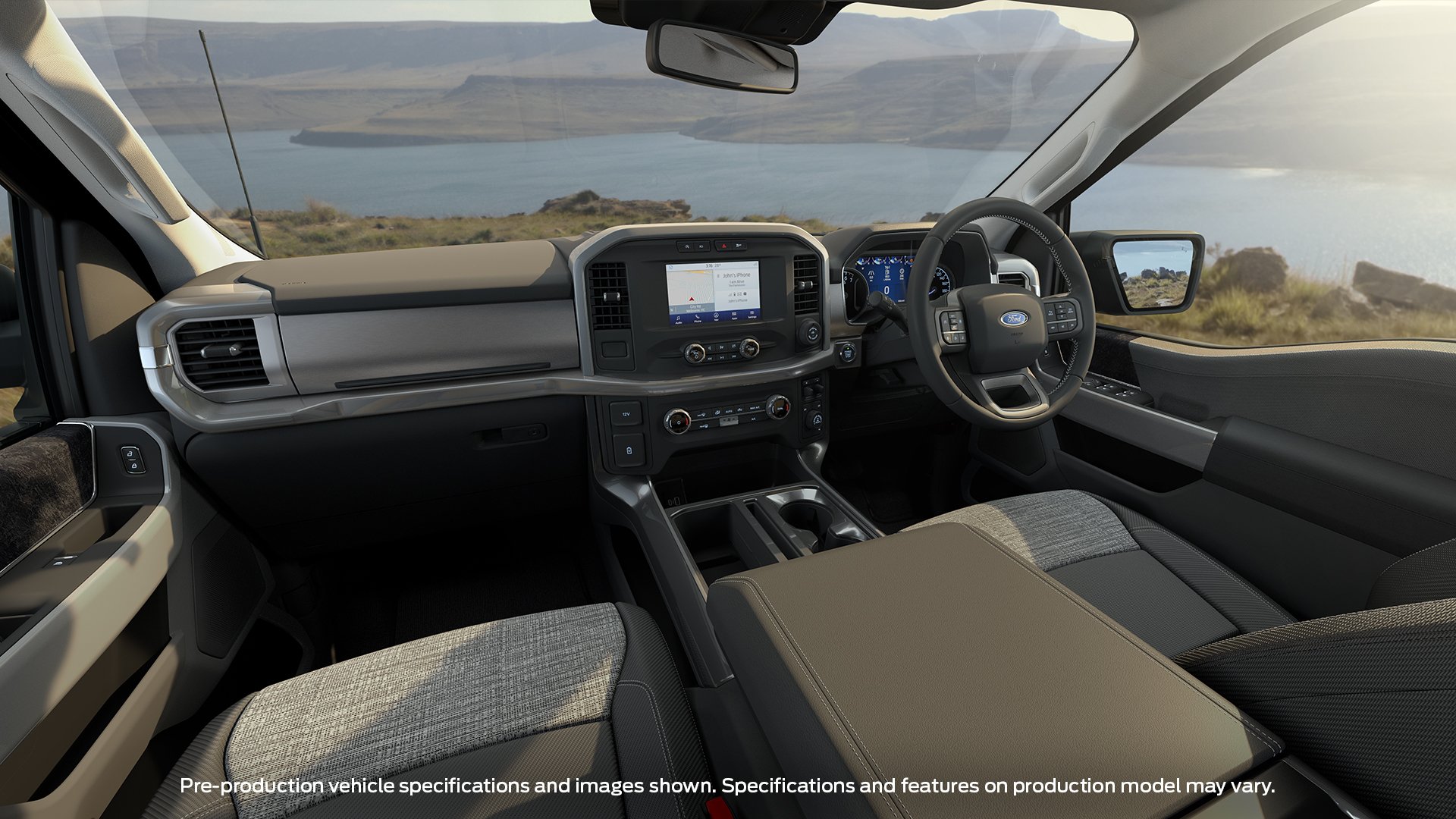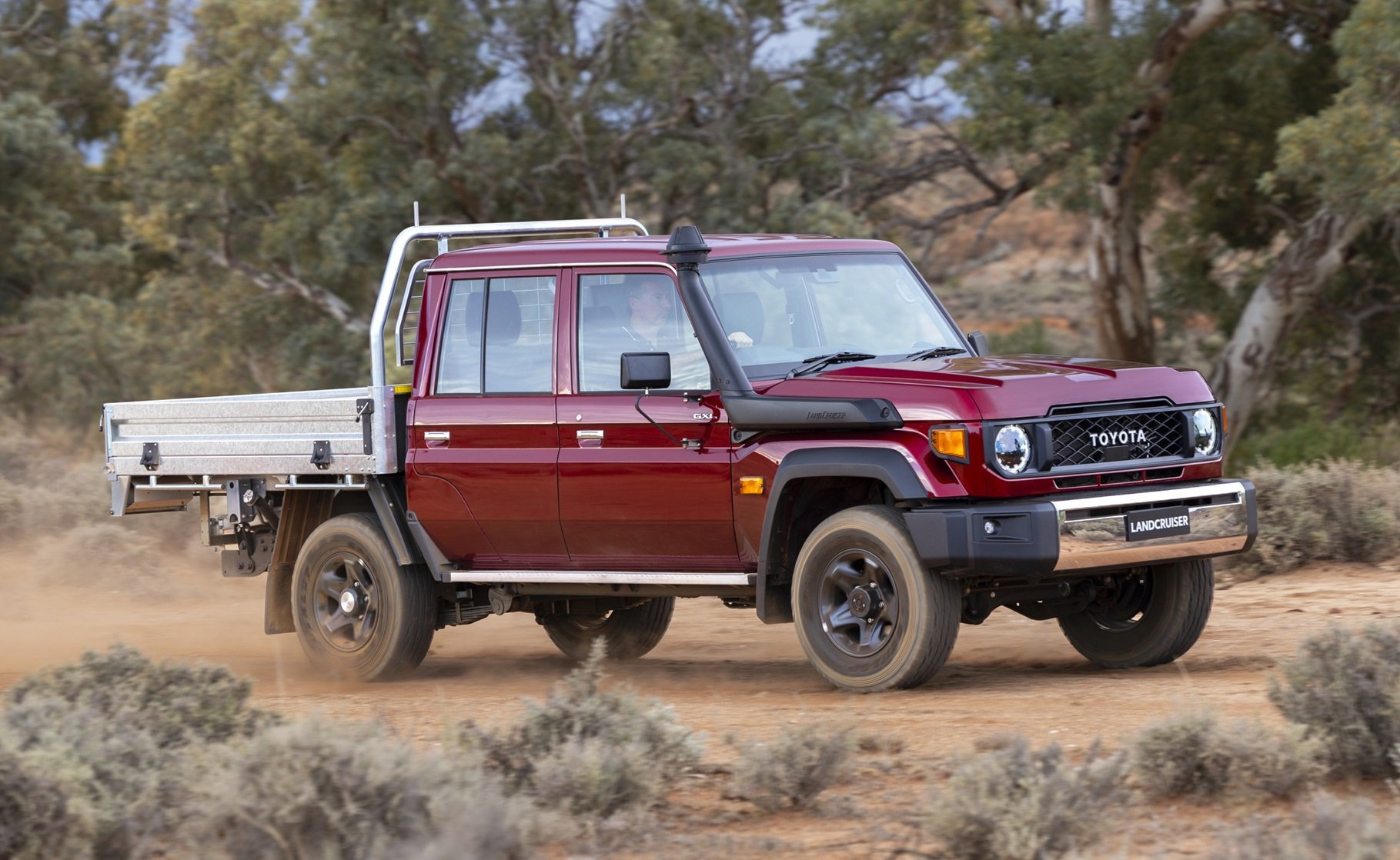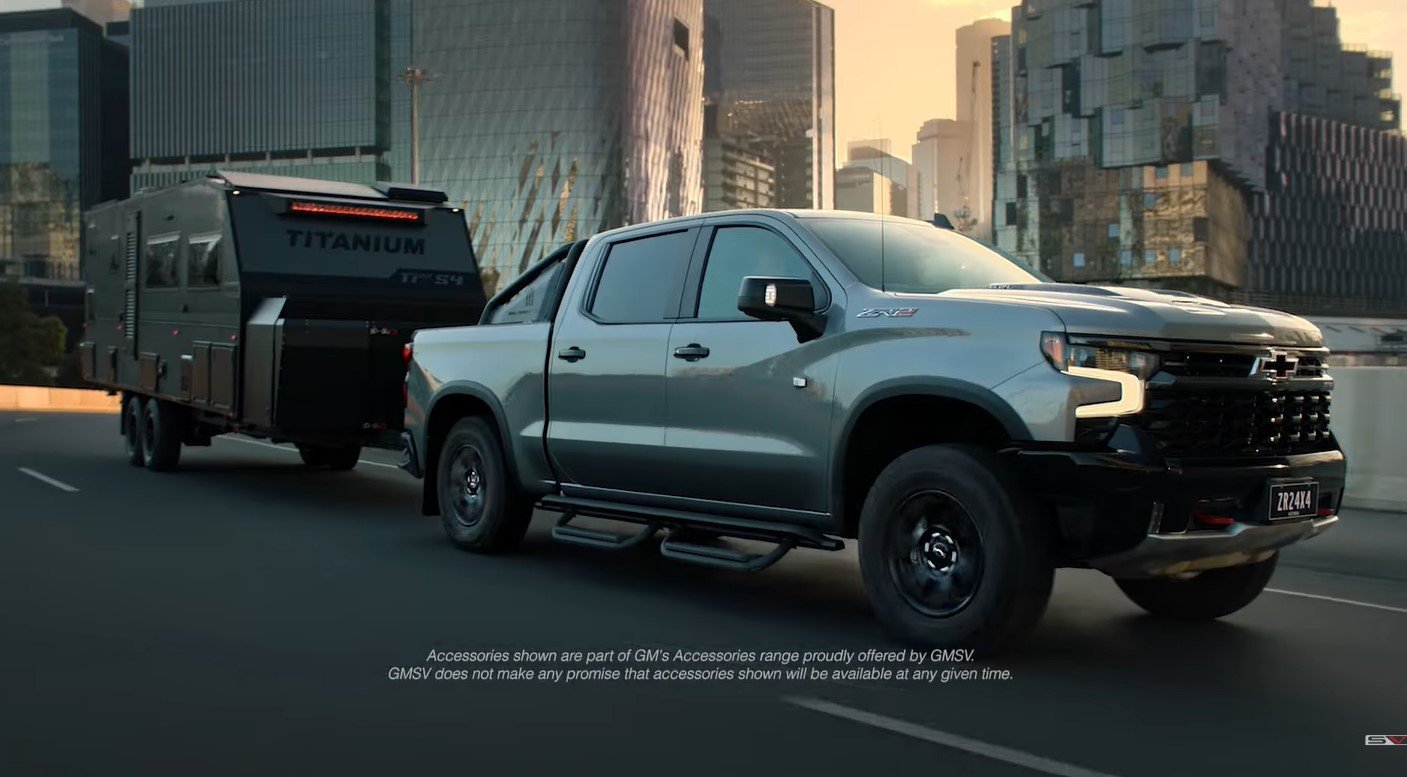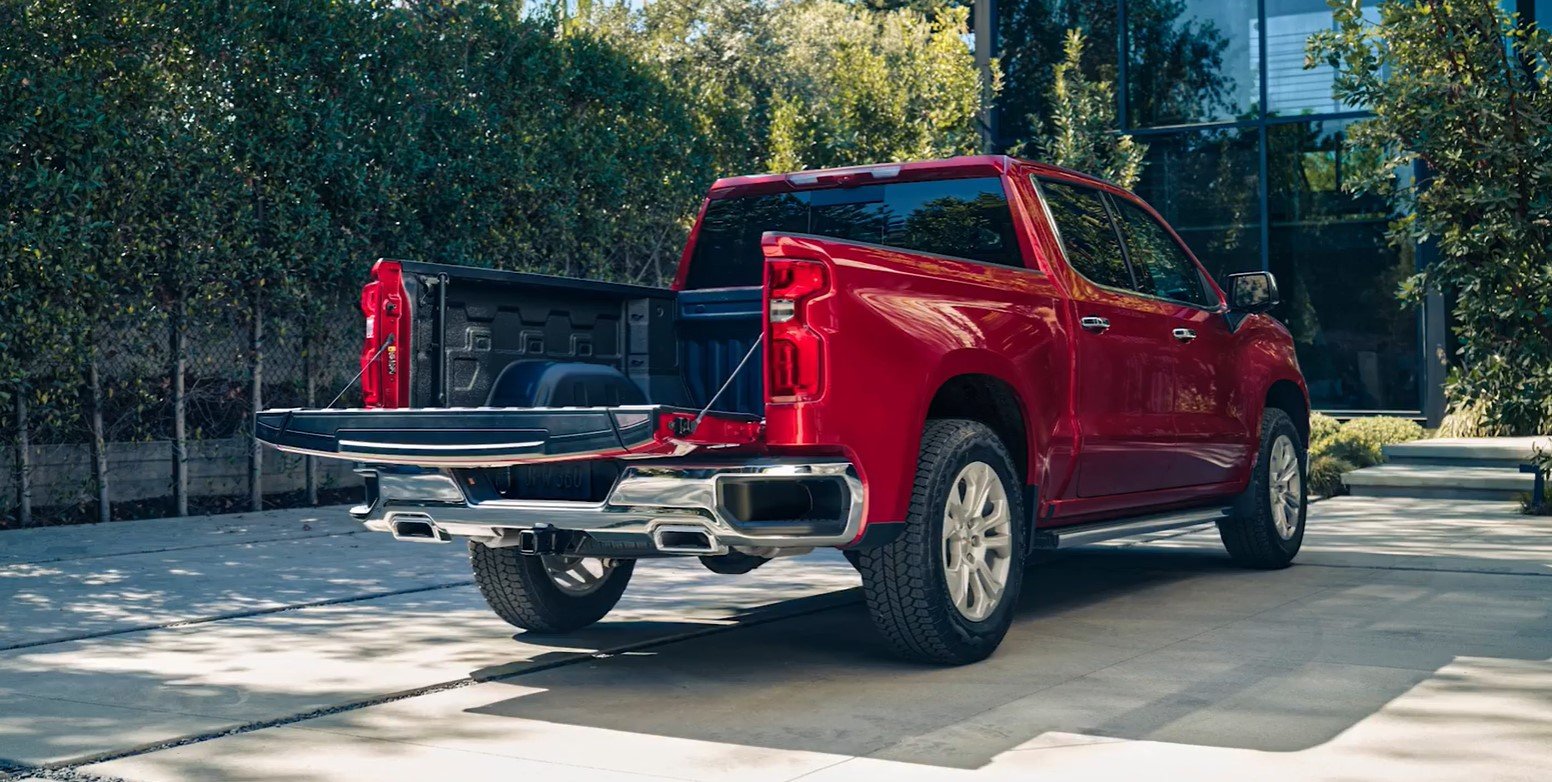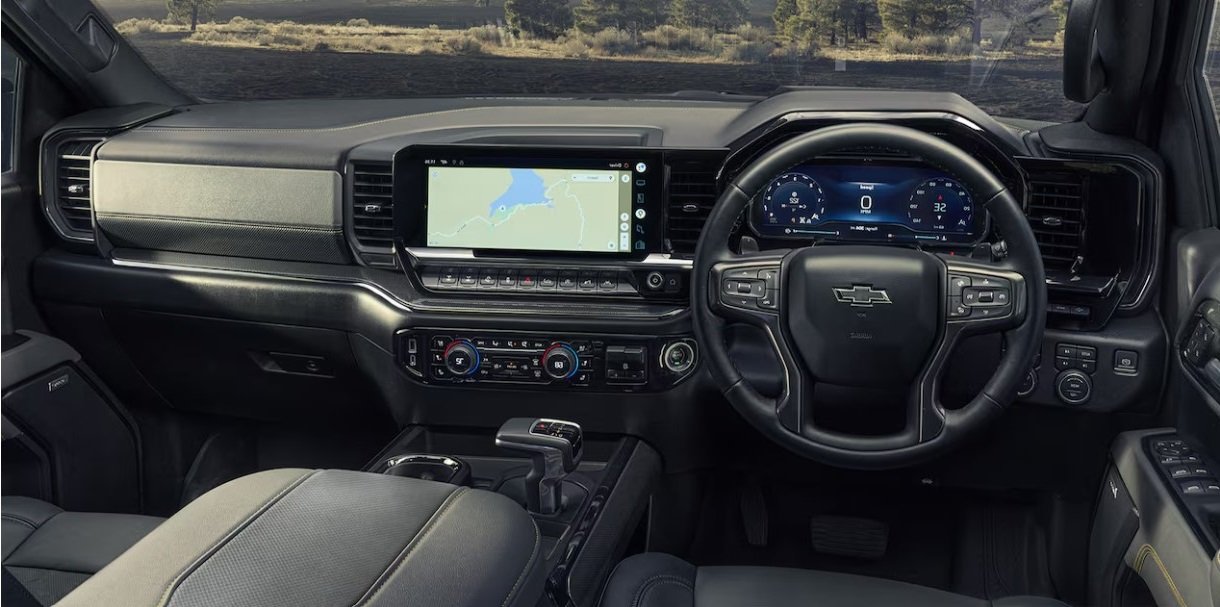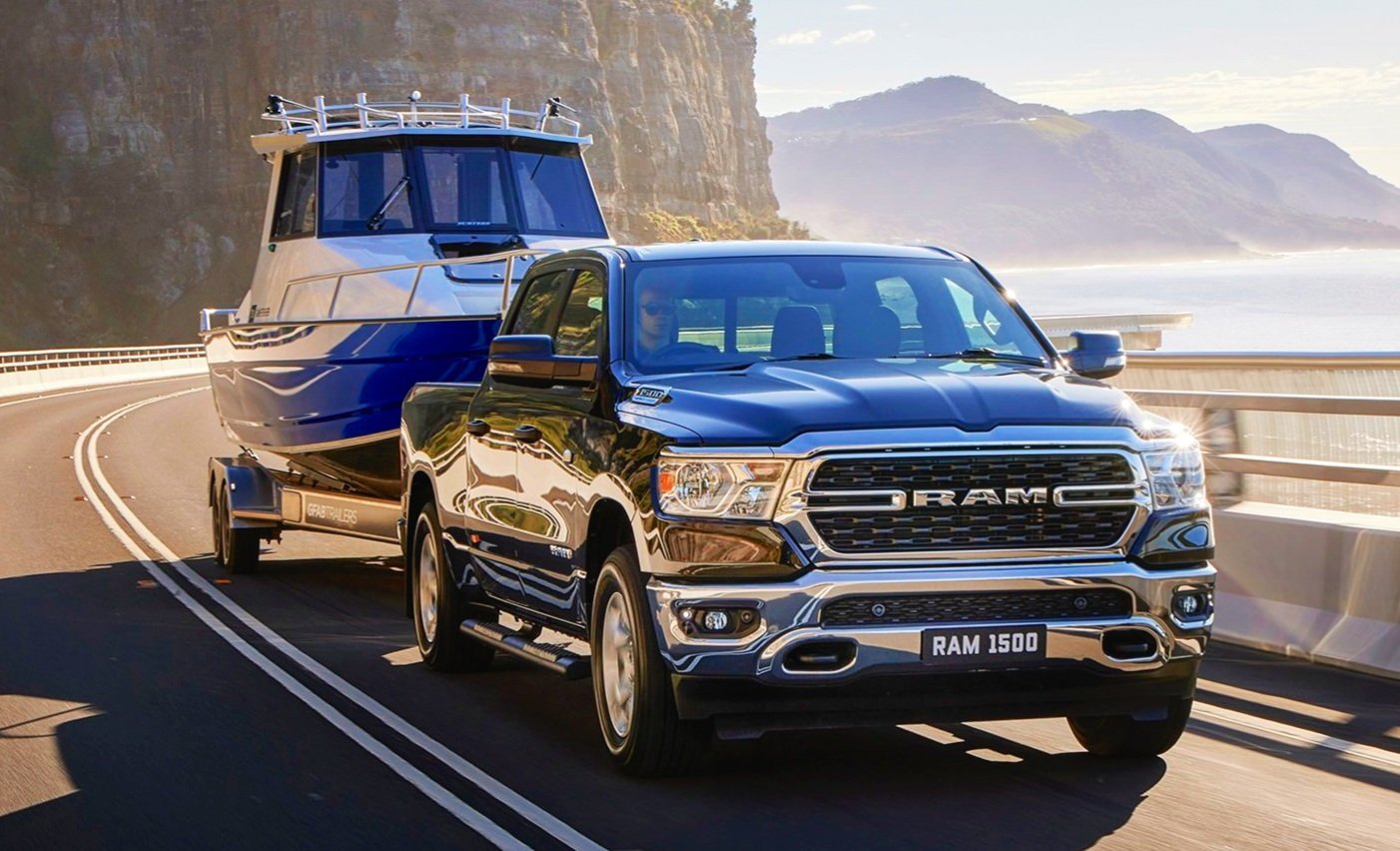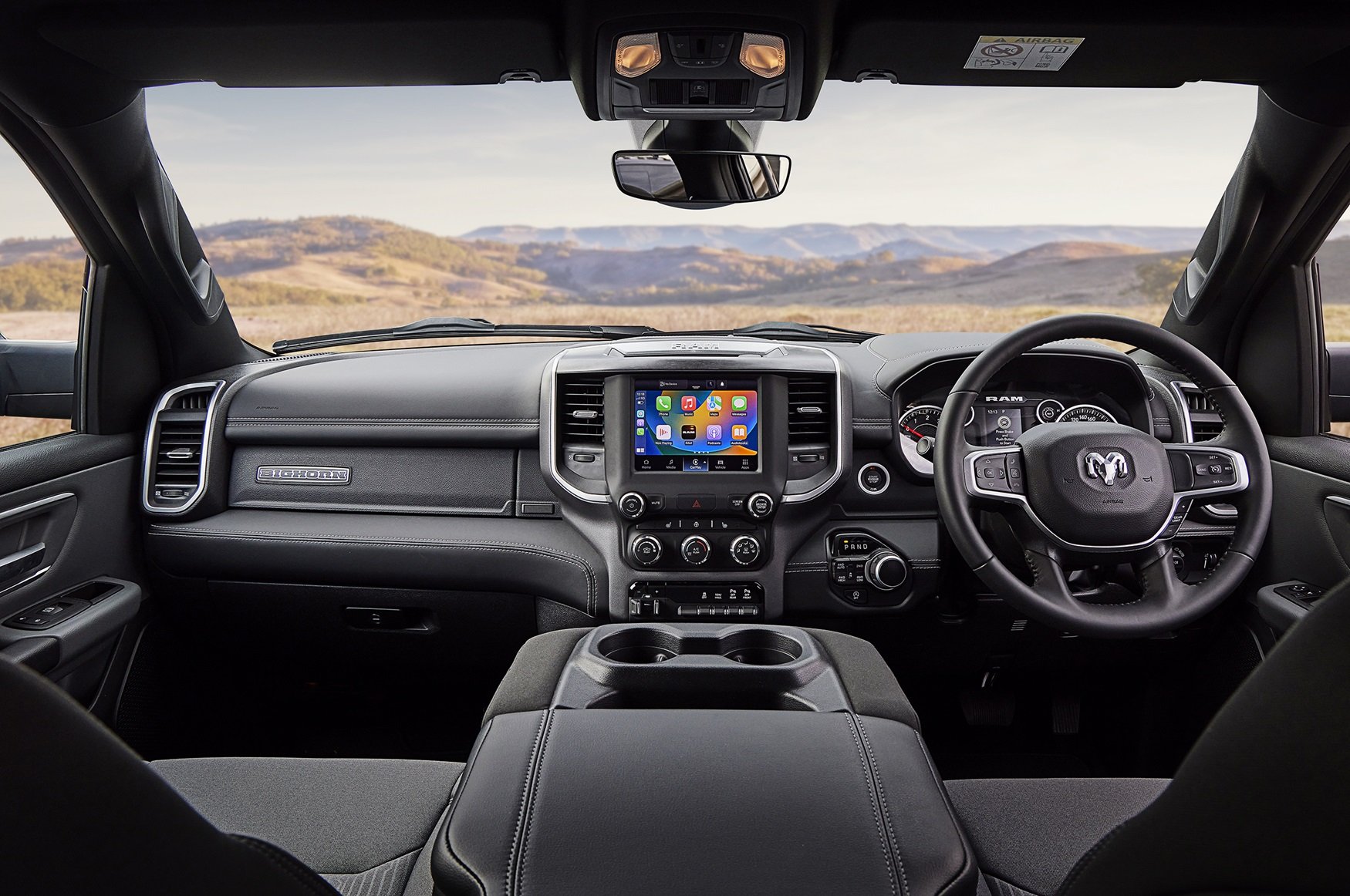Ford Ranger Super Duty review and buyer’s guide
The 2026 Ranger Super Duty promises bigger towing, more payload, better off-road credentials and an even bigger price. But can Ford improve the ownership experience and general reliability?
The Ford Ranger Super Duty will be an even more capable dual-cab ute than the Ranger Wildtrak or LandCruiser 79 you’ve been dreaming of.
But if you thought a Ranger or Toyota 79 Series was getting expensive, you ain’t seen nothing yet. Increasing the capability of a Ranger doesn’t come cheap, especially when you up the towing capacity, broaden its off-road envelope and toughen it significantly.
But what does that mean for you, in the real world? How can Ford promise bigger figures from the same basic Ranger platform?
Here’s everything you need to know about the upcoming Ford Ranger Super Duty in 2026, so you can decide if it’s worth dropping down your six figures down on the biggest, baddest Ford ute ever made.
Thinking about how carmakers design their next new flagship vehicle, the one that’s going to carrying your company’s financial future for the next ten years, is an exercise in inductive logic. Starting with a premise and using observed patterns to draw reasonable conclusions.
Ford makes pick-up trucks, utes and vans. That’s pretty much all they do now. So when it came time to design the new generation Ranger, with lots of input from Australia, Ford had to decide the trajectory of various product grades and variants and special editions to stem from the platform.
Lots of ‘What are we going to do with this new Ranger?’ and ‘Should we make a Super Duty, a Raptor and a Tremor edition?’ type of questions were asked, clearly with firm yesses to all three. So this Ranger platform was never going to just be the regular 5-tier dual-cab ute and some single-cab/super-cab type spin-offs. They wanted this platform needed to do more.
And the vehicle they were clearly targeting to poach sales from, was the Toyota LandCruiser 79 Series, which enjoys a captured market with mining, agriculture and emergency/rescue services - as well as the hardcore 4X4 fraternity.
But the 79 is an antique: crude, primitive and basic almost to a fault. And clearly Toyota enjoys immense profit selling these things at $80,000 a pop and almost 12,000 units like they did in 2024.
Why wouldn’t Ford, with its pick-up building pedigree, build something to compete with it?
The reason a vehicle’s “platform” gets mentioned in the car industry is because it’s the base structure to which everything is bolted to and hung off. With Ranger launched in 2021, you would anticipate the product planning began way back in 2018-19.
The product planning team knew they’d be doing a Sport and Tremor mid-tier variants (and what equipment they would get for what pricepoint), they planned the Platinum model grade above the Wildtrak, they knew the Everest would be built off theback of Ranger again, and of course, the had to make plans for the plug-in hybrid version as well.
Somewhere in this product planning schedule you can guarantee the Ranger Super Duty idea was also put into motion.
So what is the Ranger Super Duty? Is it a sticker pack plus snorkel for superficial appeal, or have they actually done their engineering homework? They’ve done both, seemingly.
It’s effectively a Ranger with all the key selling points pumped up, but it’s also a bit of a Frankenstein with major components from the various Ford R&D catalogue. We’re talking:
94 per cent new chassis
Bronco Raptor 10-inch rear diff
New suspension and steering rack
New track width
New cast aluminium suspension components
New final drive ratio
The Ranger Super Duty is designed to carry a significantly increased payload, which has been confirmed at between 1982kg for the single-cab and 1825kg for the double-cab.
Presumably you need a vehicle such as this with a 4500kg gross vehicle mass limit to be capable of a 4500kg towing capacity, which Ranger SD gets, and an 8000kg gross combination limit.
Ford says it has kept the same Ranger frame dimensions, however, the “frame is thicker” and unchangeable hardpoints are more robust on the SD, including the suspension, tray mounts and tow bar mounts which “have been reinforced”.
You cannot design a ute for that much payload and towing ad hoc. You account for this in the original design.
This might explain why Ranger was built so much heavier than other utes; because a Ranger Super Duty wouldn’t be possible if the regular Ranger was a lightweight.
What this means for you is that, most likely, the Ranger Super Duty will be a well-executed, highly functional, and (hopefully) quite reliable workhorse for anybody needing a greater, safer load limit. This is because it was baked into the platform.
Whether or not Ford can make the Super Duty a viable proposition for you depends on what you need it to do. Once again, you’ve just got to digest the pricetag.
FEATURES & PRICING
Ranger Super Duty will go on sale in early 2026, after which the dual-cab pick-up variants (what we usually call ‘tubbed’ or ‘body tubbed’) and XLT variants will also go on sale later most likely in the second half of 2026. The dual-cab pick-up versions launching will also make the ‘Traction Green’ hero colour available.
We now know the pricing for single-cab, dual cab-chassis and super-cab variants of the Ranger Super Duty, and it’s going to be hard for Toyota Australia to continue justifying its 4-cylinder asthmatic 2.8 single-turbo diesel donk in the 79 Series.
Ford Australia has quoted pricing as before on-road costs (that’s normal) but also before adding some combination of steel tray to either of the three body options.
So let’s look at the retail pricing (that includes GST) for single-cabs in either the galvanised tray, body-coloured tray and the matte black tray - and sticking with the default Arctic White paint colour.
Single-cab: $95,000 approx. driveaway
Starts at $83,000 (before on-road costs) | add galv. steel tray (~$7,000) | $90,000 (before ORC)
Single-cab: $96,800 approx. driveaway
Starts at $83,000 (before on-road costs) | add body coloured steel tray (~$8800) | $91,800 (before ORC)
Single-cab: $97,300 approx. driveaway
Starts at $83,000 (before on-road costs) | add matte black tray (~$9300) | $92,300 (before ORC)
Super-cab chassis: $97,800 approx. driveaway
Starts at $86,500 (before on-road costs) | add galv. steel tray (~$6,300) | $92,800 (before ORC)
Super-cab chassis: $99,500 approx. driveaway
Starts at $86,500 (before on-road costs) | add body coloured steel tray (~$8000) | $94,500 (before ORC)
Super-cab chassis: $100,000 approx. driveaway
Starts at $86,500 (before on-road costs) | add matte black steel tray (~$8500) | $95,000 (ORC)
Dual-cab chassis: $101,000 approx. driveaway
Starts at $90,000 (before on-road costs) | add galv. steel tray (~$6,000) | $96,000 (before ORC)
Dual-cab chassis: $103,800 approx. driveaway
Starts at $90,000 (before on-road costs) | add body coloured steel tray (~$8800) | $98,800 (before ORC)
Dual-cab chassis: $103,100 approx. driveaway
Starts at $90,000 (before on-road costs) | add matte black steel tray (~$8100) | $98,100 (ORC)
Dual-cab chassis: $103,100 approx. driveaway
We rightly predicted here at AutoExpert that, given the price of a Ranger Platinum is effectively $90,000 driveaway these days, you should’ve expected the Super Duty to be a $100,000+ proposition - which it is.
This puts it up there with LandCruiser 300 and Nissan Patrol, the RAM 1500 and Chevy Silverado ranges, as well as its own-brand F-150 pick-up - all of which are well north of $100K purchases.
It also offers compelling value against the Toyota 79 Series.
The interior of Ranger Super Duty is basic, but it’s lightyears ahead of the ancient LandCruiser, despite Toyota Australia’s half-arsed efforts to modernise it in recent years (if you can use that term with a straight face).
There are no perforated leather seats (yet) on Ranger SD, no fancy coloured stitching, and only one key change to the interior’s design. You get a spot to mount your specialist 4kg laptop and mounting bracketry.
Ranger Super Duty is not being pitched as the ‘work’ alternative to the Raptor. It’s very much its own branch on the Ranger Tree, and in fact there’s very little of the original Ranger left.
You can take the Super Duty for the light truck cred: heavy hauling, big-towing etc. Or you can choose the sportier route and get the Raptor for ‘play’, namely the rock-hopping, bicep-flexing boss who likes to head into the bush at every opportunity, revving the exhaust and pulling all the traffic management babes en route to the RSL.
Ranger Raptor is currently a $90,000 proposition. The F-150 starts at $107,000 for the short wheelbase XLT and maxes out at $141,000 for the long wheelbase Lariat.
The Ranger Super Duty slots in quite neatly at that $100,000 pricepoint where LandCruiser 300 and Nissan Patrol happily sell in decent numbers month after month. Watch Ranger SD sell like the proverbial hotcakes.
In fact, you’ve probably already put your name down on one.
ENGINE
Without doubt, the venerable turbocharged 3-litre V6 diesel we know from the rest of the Ranger line-up is the correct engine choice for the Super Duty. It’s proven that 184kW is plenty of grunt for the majority of towing and load-carrying applications, and that 600 Newton-metres is ample for getting a notional 3350kg off the line.
But on the contrary, Ford has actually given Ranger SD a 16 per cent reduction in peak power, down from 184 to 154kW.
Considering this thing now weighs 26 per cent more, it’s going to be a serious performance reduction. However, they have maintained the peak torque output of 600 Newton-metres at the same revs, but the torque is spread over a wider set of gear ratios.
In the mid-range, power is going to be smilar, but at higher revs, such as overtaking, you’re going to notice the comparatively sluggish performance when you increase the GVM by 37 per cent or the GCM by 25 per cent.
There has to be a durability type reason for this engineering choice. Considering the hype this vehicle has received, it’s counter intuitive that they haven’t spruiked how much they’ve potentially increased the reliability by in the power reduction.
But then again, perhaps that would be flying to close to the sun in acknowledging (without explicitly stating) their 184kW bi-turbo V6 is less reliable than the de-tuned Ranger Super Duty with only 150kW. They don’t want to go admitting such things, which probably explains the marketing buzzwords, “unique calibration” in their press release.
They said that the cooling system is 25 per cent more efficient, but that’s marketing speak for having to increase the cooling system’s capacity to reject about 25 per cent more waste heat generated by having to move about 25 per cent more mass because the vehicle is so much heavier.
Meaning, there’s been an increase in the amount of heat generated by requiring more energy to move the larger mass, so you need a cooling system increase to compensate. This might also explain why the engine’s power production is reduced because you might struggle to reject sufficient amounts of heat if you were still making 184kW, so a compromise had to be made in order to maintain reliability. It could also be a transmission limitation.
The ability to postpone your DPF regeneration burn is going to appeal to you, either in fleet terms or private use, if you’re in any kind of high fire danger zone such as: coal mines, dry bushland, grassy fields, near flammable liquids or gases, or simply in an enclosed space.
The advantage with a Super Duty is going to be a softer-sprung front end for passenger comfort compared with conventional trucks. And of course keeping the GVM at 4500kg means you won’t need to upgrade your regular driver’s licence.
What’s important to understand here is that Ford is pushing very hard for light commercial fleet sales. That’s not ‘light commercial’ in the way the media and carmakers like to mis-use the term; it’s light commercial in terms of trucks like the Isuzu NPR, Hino 300 Series and Iveco Daily.
Proper ‘light rigid’ trucks designed from the get-go to carry heavy loads, tow heavy trailers and go off-road with extreme ease are propbably still going to remain the ideal choice if you want to ‘do this properly’.
OFF-ROAD
Ground clearance for Ranger Super Duty is up from 234mm on a standard XLT to, depending on which SD variant you’re looking at, between 295-299mm. That’s about 60mm or about 27 per cent more and it’s thanks, in part, to the increase in tyre profile.
Standard XLT runs on 31-inch tyres from the factory, but you’re going to be running 33-inch General Grabber all-terrain tyres on a Super Duty.
The rest of the ground clearance gain is thanks to the suspension lift, which is a net benefit for off-roading. But there’s more here than just taller dampers, springs and tyres. They’ve used new hardware as well.
Instead of the pressed steel control arms, they’ve used cast aluminium, the front hubs are from an F-250 and there’s an additional 1mm of thickness in virtually entire chassis. The K-frame brace in the centre of the chassis is also thicker.
The other knock-on effect of the increased ride height is a 50mm improvement in wading depth, now up from 800mm to 850mm. That’s the best wading depth in the entire dual-cab 4WD ute and hardcore 4X4 wagon section of the market.
The track is also widened 90mm from 1620mm to 1710mm, which will make the now much taller Ranger SD much more stable in corners (especially when laden and/or towing), it will also keep a similar centre of gravity profile to a standard Ranger.
Half a tonne of additional mass is not just superficial componentry, they’ve done substantial engineering work here.
New driveline hardware includes a low-range transfer gearset from the F-150 Super Duty, plus front and rear locking differentials.
The front diff is borrowed from the Bronco Raptor sold in the US, the rear diff is from a Transit long-wheelbase, and the 4A full-time four-wheel drive setting is now permanent. Meaning, you cannot drive the Ranger Super Duty in two-wheel drive.
That’s not necessarily a bad thing, given how eager some buyers are to push payload and towing limits and head off into the road network with innocent bystanders. Keeping all four wheels on the deck for dynamic stability is always a win for society.
It’s got an eight-stud wheel hub with larger diameter studs holding the 18-inch steel wheels to the hub, which, in addition to using the beefier diffs, makes it even sadder that power hasn’t remained the same or even increased. Because it seems the driveline is more than capable of handling it.
Given the greater payload limits, naturally the dampers are bigger in capacity, and leaf springs are much thicker - all designed to cope with additional payload.
Speaking of, the single-cab Super Duty gets an official payload limit of 1982kg, the super-cab is limited to 1896kg, and the double cab-chassis is rated to 1825kg of maximum payload. Remember: this includes you, any accessories, everything you put into the vehicle, as well as anything you put in the tray - and it includes the towball download exerted by ay trailer you hitch up to.
Knowing the gross vehicle mass is 4500kg, and with the kerb mass for each body variant known: single-cab weighs 2518kg; 2604kg for the super-cab; and 2675kg for the dual-cab we can also deduce the remaining payload available at the GCM limit.
The standard Ranger XLT dual-cab chassis kerb weight is 2130kg with a GVM of 3280kg, meaning that enhancing the Ranger with Super Duty status adds about 500kg to the kerb weight.
This means that in the process of converting a Ranger in a Super Duty means the GVM has risen in absolute terms by 1220kg, but 550kg of that has been cancelled out by the additional hardware needed. This means your net gain is about 670kg of additional payload. That’s not nothing, but let’s put it in perspective.
An extra 670kg of payload is not significant, it’s just not outrageous, like many motoring media outlets will claim.
So empty, Ranger Super Duty dual-cab has 1825kg of payload. When you max-out the towing and apply 450kg of towball download, you’re left with 1375kg of payload.
But it is a massive improvement over what Toyota is offering with the LandCruiser 79 Series or 76 Series Troopcarrier. And if you’re a fleet manager who needs this vehicle to work in the extreme, you don’t need to get a GVM upgrade ex-factory.
In fact, the safe working limit is much, much further away, meaning inherent worksite safety is greatly improved.
A cynical person might declare Ford’s historical record of reliability, with this kind of increased workload, is a case of writing cheques that aren’t going to cash. But without the hysteria, let’s be honest, it’s not going to be that bad. Ranger is Ford’s hero product in Australia. A $100K+ Ranger in Australia is going to be fairly reliable in the vast majority of cases.
Having said that, Ford has addressed the driveline vibration early in Ranger’s life, they recalibrated the hunting 10-speed transmission issue, and it does seem like they’ve chosen some fairly decent driveline components to beef up the credentials.
Let’s hope they’ve increased the necessities like braking in proportion to the additional mass, inertia, loads and heat this thing is going to produce.
Speaking of additional loads, they have also fitted a yaw sensor on the rear sub-frame which is used to provide live load measurements. This build-in onboard payload scale means you no longer have to do the mental arithmetic as the articulated front-end loader driver waits patiently with a half-full bucket of soil.
The onboard scale also means there’s absolutely no excuse for the hardcore 4X4 army to be overloaded with recovery gear, accessories, camping gear, eskis and all the other off-road adventure paraphernalia.
TRANSMISSION
Like engines, transmissions work very hard, get very hot, and are critical to the long-term viability of any drivetrain. With the Ranger Super Duty, it’s going to use the same unit from the ordinary Ranger.
You’ll see the same 10-speed “SelectShift” epicyclic automatic transmission, which is a good thing in terms of it being a known entity.
If Ford’s 10-speeds have been designed and developed from the beginning to cope with the increased payload and towing expectations of the Super Duty, they should prove reliable and capable considering how popular these things are in the US.
But there were gremlins in the shift logic of the 10-speed where it would hunt constantly for the right gear at moderate road speeds. Ford Australia hasn’t stated whether the transmission’s ratios have been changed at all, which suggests they’re using the standard Ranger ratios, and probably because it’s already good enough.
Then there was the vibrating driveshaft itself which was out of phase with the tailshaft. But props to Ford for actually getting that issue resolved, unlike the Powershift dual-clutch transmission from last decade. (Remember that?)
On the other hand, if Ford is going with the same transmission which (hypothetically) was never originally developed to the Super Duty standard, there could be problems down the line. If they’re simply going to hope for the best after beefing up everything else and paid no regard to the transmission, we could see early failures.
Attaching and hauling a trailer, that weighs roughly twice as much as the prime mover, and then overtaking trucks, climbing steep hills, stopping and starting in busy city traffic during 45-degree heat - it could all prove too much for a transmission not adequately engineered for those harsh operating conditions.
And Ford has a track record (and reputation) for rushing its transmission R&D. The company’s failure to address the PowerShift DCT cost Ford Australia $10 million. But there is some optimism here in that they seem to have turned that ship around, which they’d want to considering they only have one vehicle keeping the books balanced here in Australia.
Further potential good news is that the low-range transfer case is derived from the F-150 Super Duty which is a positive sign in terms of robustness.
TOWING
The numbers are impressive. A 4500kg towing capacity does suggest you’ll be able to upgrade to a bigger horse float, scrap the cold, rickety old Hino truck, and bring your 3.5-tonne mini excavator on site with one vehicle.
That means no more running the truck in the freezing rain with no heater. You can streamline the business and use one ute for everything.
You also get a 130-litre fuel tank capacity - taking diesel, of course.
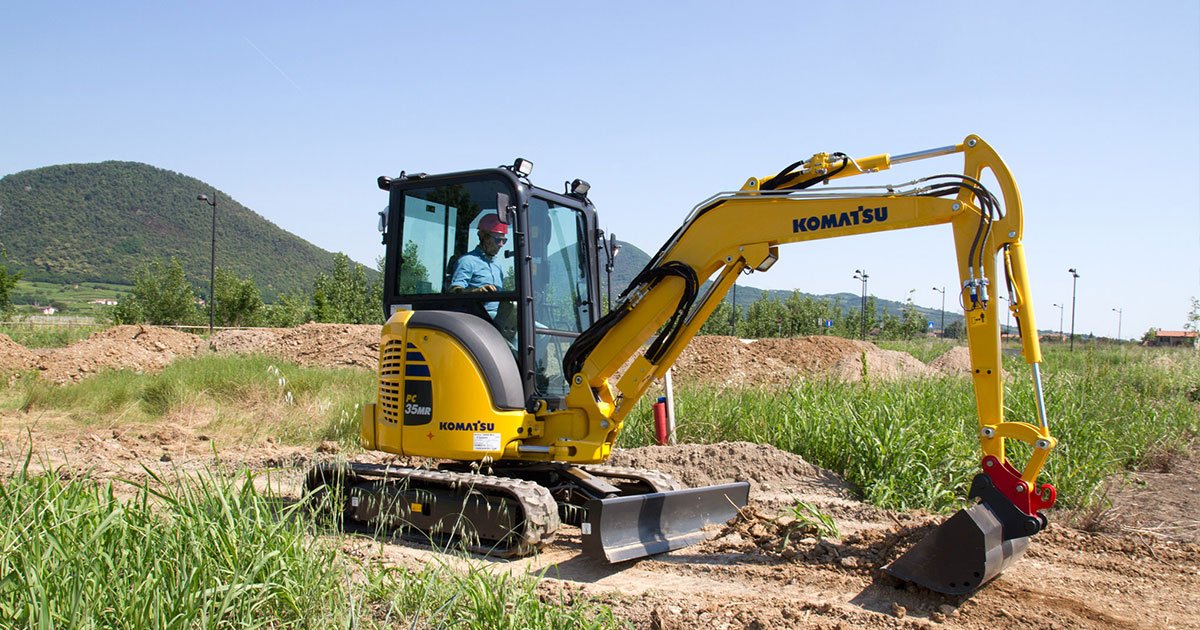



Well, maybe, yeah. But if you do max out that towing capacity, you’ll need to watch the payload, as usual, however the safe working limit will be higher. And it’ll be much more appropriate for doing the more civilised duties that exist in the periphery of all the mud and dust.
Things like out-of-office site inspections where you need to bring Heavy Piece of Equipment-X to destination A, while also taking clients to survey progress of your tunnel or bridge or nuclear fallout bunker - whatever - both of these are possible here.
But, there does need to be something said here for the fact that any muppet 20-year-old (with a big head and buckets of over-confidence) and yet no heavy towing experience, can get their car licence and hop into one of these new Ranger Super Dutys and is legally allowed to hitch up to a 4500kg trailer. That’s a $200,000, 7-tonne combination under the watchful, distracted gaze of a recently 19-year-old.
Here are the details on Ranger Super Duty towing.
Maximum towing capacity is 4.5 tonnes, gross vehicle mass is 4.5 tonnes, but the GCM is 8 tonnes - exactly. This means that from a mass perspective, if you tow a 4.5 tonne trailer, then the maximum total mass of the vehicle is 3.5 tonnes.
If you load the vehicle to 4.5 tonnes, you cannot tow more than 3.5 tonnes. It’s not 4.5 plus 4.5. You cannot max-out each side of this equation.
Bear in mind that putting 450kg on the towball, slung out on the towball, you’re leveraging the rear axle with about 600kg, even though they have pumped up the front-rear axle limits.
It needs to be said that this vehicle will absolutely impress at towing 3.5 tonnes in the way a normal Ranger is quite comfortable towing 2.5 tonnes and takes it in its stride. But it needs to be acknowledged here that it’ll also be as poor at towing 4.5 tonnes as a standard Ranger is at towing 3.5 tonnes.
This is due to the fundamental nature of the prime mover (the Ranger SD) being inherently lightweight compared with the pig trailer with its centralised axles that make it compromised in pitch and yaw. Click here for the Ultimate Towing Guide >>
A Ranger Super Duty is not immune to being overwhelmed by a 4.5-tonne trailer. Keep the trailer weight low, and drive conservatively.
I'll help you save thousands on a Ford Ranger Super Duty
Just fill in this form.
No more car dealership rip-offs.
Greater transparency.
Less stress.
FUNCTIONALITY
There are plenty of features in the Ranger Super Duty which Ford absolutely wants you to know about.
Things like the in-cabin tablet holder, which is an optional extra, but the swivel desktop from the F-250 would’ve been more usefull for fleets. The roof-mounted auxiliary switch bank is a great idea in terms of insulating private buyers from the temptation to wire up their own. Here is has 6 switches to connect things like additional floodlights, UHF radio, travel fridges etc.
There’s also a a power outlet in the bed, a series of chunky tiedown points, and the obligatory gigantic mirrors ideal for towing. These are all staples of the Ranger recipe.





Offering a legitimate step and vertail rail system for climbing into the tray is a genuinely intelligent idea from Ford here. This could actually be a worthwhile investment for anyone working on large farms or in remote locations where often it’s just you, by yourself, and a few hours from the nearest emergency department.
The jury is still out on how durable the integrated (and optional extra) tablet holder is going to be, long term, especially given that most people using this thing for work are probably going to use a laptop. But the world is changing and screens are everywhere, so maybe it will serve a purpose.
Ford has collectively applied its brain to the rear bumper by fitting a dedicated crash bar to be the first line of defence against departure damage caused by rocks and ruts when exiting sharp troughs while off-roading. This bar is designed to take the brunt and prevent the rear sonsors, electrical and towing aperatus from taking the whack.
DRAWBACKS
SIZE & WEIGHT
Physics says that the more kinetic energy you apply to a system, the more opposing force is required to stop it. Trucks travelling at 80km/h hold more kinetic energy, are bigger and heavier than passenger vehicles, and require more opposing force, greater distance and more time to stop. But they also behave differently to regular vehicles, particularly because of their mass and overall shape.
One would hope Ford has increased the braking performance, revised the stability and traction control systems, as well as designed beefier suspension to handle the additional bulk, fitted bigger, chunkier wheels and tyres, and uprated the cooling system to handle the additional work/heat generated by notionally towing eight tonnes.
Say that again: eight tonnes. That’s 20 per cent more than a typical male African elephant.
The prospect of an 8-tonne pig trailer-Ranger combination is unlike anything most ute drivers have driven before. We’ve seen the results of overzealous owners of Ranger Wildtraks, Hiluxes and D-Maxes who’ve lost control without even being at their gross combination limit. And the Ranger Super Duty is going to be given a 25 per cent GCM increase. With a regular car licence.
The fact a young apprentice can start their driving career in a clapped out old PK Ranger from the early 2010s with a tired old 3-litre 4-cylinder diesel engine and a kerb weight of 2000kg, and then be handed the keys to the boss’s spanking new 2.4-tonne Ranger Super Duty - with no additional driver training - is bizarre.
Particularly in terms of the towing and load-carrying potential of such a vehicle that you can guarantee will be marketed as being good to drive on a car licence, without any formal education about how a possible 8-tonne combination drives differently, it’s dangerous.
Lots of terrible drivers, who’ve picked up all the wrong driving habits from their mates and their parents over the years, are notionally going to be given access to more weight travelling at speed, sharing the roads with mums dropping their kids at school, grandparents, and other probationary drivers, pedestrians, motorcyclists etc. should be a concern.
Truck drivers who intend to get their Heavy Rigid (HD) licence are required to start with their Light Rigid, then step up to Medium Rigid (MR) before reaching the top tier.
Putting someone untrained in how to drive a truck, in charge of what is just 1kg shy of needing a light truck licence, is a recipe for a roadside memorial or two - perhaps at the foot of a tree or some big concrete powerpole.
A Ranger Super Duty weighing 2.4 tonnes being expected to keep a pig trailer under control that weighs 2100kg more than it, is inviting the Grim Reaper for dinner on the wrong kind of dodgy backroad, at night, in the pouring rain, where skippy jumps out in front.
Hypothetically, you can fill up the Ranger Super Duty to weigh exactly 4499kg, without having to be taught how to drive a truck. Do you see the point here? You’re notionally just a 2kg bag of sugar away from needing to be taught how to control a proper truck, with its extra weight, size, its sluggish speed, how it handles, techniques for emergency stops - etc.
But you could potentially step out of mum’s old Camry straight into an almost 4.5-tonne Ranger Super Duty.
POWER
The fact you’re paying an additional $30-35,000 for 16 per cent less power seems like a downgrade - probably because it is.
Having the same amount of power as a Mitsubishi Triton GSR (costing about $40,000 less) should be a concern, especially given how emphatically powerful the regular Ranger is compared with its rivals. So to have an extra 400-500kg of kerb weight to push through time and space (and their air), means you’re going to have a difficult time passing B-doubles at 110km/h with a high payload and trailer in-tow.
Fact is, Ford had to make a compromise with this vehicle. There’s no other explanation that makes sense.
Reducing the output means less heatsoak they would have had to deal with as it shortened the life expectancy of some critical component. R&D accelerated life testing must have revealed that the increased cooling system was absolutely necessary, but still insufficient to leave the peak power output at 184kW.
It could’ve been a head gasket, or something in the EGR system, possibly the cooling system itself. We’ll never know because Ford will bury that information under 1000 metres of concrete (figuratively speaking) before it gets into the public.
But the point here is that carmakers do not downgrade a vehicle such as this, especially one that champions the inner off-roading enthusiast who lusts after more grunt, unless there’s an absolutely critical reason.
On the bright side however, at least they had the fortitude to actually give it the downgrade in power to preserve reliability and their reputation as a result.
INTERIOR
Given the additional cost it would take to re-tool the factory to make entirely new major interior components, it was unlikely we’d see a whole new interior. But having said that, there is plenty of change in the Super Duty.
You can see different finishing touches to things like additional side-out cupholders, panelling tweaks and some styling changes.
But effectively you’ll see the same 12-inch touchscreen, the same steering wheel, buttons and switchgear, and broadly the same centre console layout.
There’s new faux leather in the dual-cab XLT version, because that’s a pretty simple change to make at the factory in terms of what you supply, as a carmaker.
There’s the usual towing-related camera system and reversing software to help you line up the towball with the hitch, and that’s generally where that’ll end. You’ll probably never use that stuff.
In the XLT or some future higher-end version, you might see a refrigerated centre console. But at least there’s wireless charging and smartphone Bluetooth connectivity, but don’t expect ventilated seats on those heat-soaked leather pews to keep your arse cool until a Wildtrak comes along.
MAIN COMPETITORS
Ranger Super Duty has two sets of competitors now that Ford thinks its cute little midsize pick-up can compete with proper trucks.
So let’s look at the similarly perfoming offerings from Hino, Isuzu, Iveco and Mitsubishi (Fuso) and see if you’re still getting your money’s worth with the Ranger Super Duty.
HINO 300 Series | CREW-CAB, 4X4
Engine: 4L turbo-diesel 4-cyl | Power: 121kW @ 2500RPM | Torque: 464Nm @ 1400RPM
GVM: 4495kg (de-rated) | GCM: 7995kg (de-rated) | Kerb weight: 3190kg
Power-weight ratio: 39kW/t | Axle load limits: 3100kg (front), 6600kg (rear)
Towing capacity: 4500kg (braked)
Ground clearance: 205mm | ANGLES: Approach: 34° | Rampover: 159° | Departure: 30°
ISUZU NPS 75/45-155 | CREW-CAB, 4X4
Engine: 5.1L turbo-diesel 4-cyl | Power: 114kW @ 2600RPM | Torque: 419Nm @ 1600-2600RPM
GVM: 4500kg (de-rated) | GCM: 9000kg (de-rated) | Kerb weight: 3190kg
Power-weight ratio: 39kW/t | Axle load limits: 3100kg (front), 6600kg (rear)
Towing capacity: 4500kg (braked)
About $135,000 (so cheaper than LandCruiser 300 Sahara)
Iveco Daily 4X4 | CREW-CAB, 4X4
Engine: 3L turbo-diesel 4-cyl | Power: 132kW @ 3500RPM | Torque: 430Nm @ 1500RPM
GVM: 7000kg | GCM: 10,500kg | Kerb weight: 3343kg
Power-weight ratio: 39kW/t | Axle load limits: 2700kg (front), 5000kg (rear)
Towing capacity: 3500kg (braked)
Ground clearance: 225mm | ANGLES: Approach: 35° | Rampover: TBC° | Departure: 29°
Mitsubishi Fuso Canter | CREW-CAB, 4x4
Engine: 3L turbo-diesel 4-cyl | Power: 110kW @2840-3500RPM | Torque: 370Nm @ 1350-2840RPM
GVM: 4495kg | GCM: 7995kg | Kerb weight: 2900kg approx.
Power-weight ratio: 38kW/t | Axle load limits: 1910kg (front), 915kg (rear)
Towing capacity: 3500kg (braked)
FORD F-150
The 2024 Ford F-150 is an impressive addition to the Australian market, blending power, capability and practicality in a full-size ute. It's ideal for those who need a capable workhorse and a comfortable long-distance cruiser.
While the price and size may deter some buyers, those who can accommodate its dimensions and budget will find it a formidable and versatile vehicle.
Big interior thanks to a massive 3.7 metre wheelbase (that’s in the short-wheelbase version, by the way), and that mini monster truck ride height is courtesy of 225mm of ground clearance. Long wheelbase is effectively 4 metres (3999mm), making it a nightmare for most Australian shopping centre carparks.
But that’s okay, because a 3.5-litre twin-turbo V6 EcoBoost petrol engine solves most problems when it comes to towing, carrying, overtaking or simply intimidating other road users (which you shouldn’t do, obviously).
Compared with the Ranger Super Duty, F-150’s GVM is 3265kg (-37%), the GCM is 7765kg (-3%) and the payload is 710kg (TBC, possibly -180%).
But the braked towing capacity is the same 4500kg which, in the context of the F-150 also weighing 2555kg, makes it about the same in terms of overall dynamic stability under those towing conditions.
TOYOTA LANDCRUISER 70 SERIES
They’re impossible not to love. For all the polish and refinement the likes of Ford, Chevy and the rest of the dual-cab brands put into making their utes more comfortable and less agricultural inside - Toyota does Toyota best.
The 70 Series refuses to get with the times, except for ditching the thirsty old 4.5L V8 for the 2.8-litre 4-cylinder diesel for emissions’ sake. The interior is spartan, hard in all the places (not just the right or wrong places), and it is an off-roader’s wet dream in terms of its simplistic design that begs you to add accessories.
Obviously the towing capacity is capped at 3500kg while weighing just 2185kg. If you absolutely do not want any creature comforts apart from a radio, air-con and Bluetooth, you’ve probably already bought one at around $88,000 a pop.
You can, of course, have it in a glorious 5-speed manual with that iconic long gearstick protruding from the cave-like vinyl floor - which is just the way some people like it, it must be acknowledged. Or you can go against the grain and opt for the 6-speed auto which will achieves a 9.6 litres per 100km combined fuel economy claim, just in case you care about that one iota.
CHEVROLET SILVERADO
Silverado (and RAM) party trick is, of course, 4.5 tonnes of alleged tow capacity - except it’s not the only one pulling this move.
This macho towing premise is going to attract some people, because it just rolls off the tongue. In Silverado’s case this is possible only if you fit a 70mm ball, and limit yourself to 422kg of towball download.
In purely performance terms, the Silverado might have the biggest capacity at 6.2 litres, producing 313kW at 5600 revs, but its kerb weight of 2.54 tonnes in the 1500 LTZ variant (essentially the base model) gives it a power-weight ratio of 126kW per tonne. That’s only 6kW (3%) more than the F-150 Lariat (SWB), and it’s 8kW (6%) more than the Ram 1500 Big Horn.
Yet it drinks the same amount of fuel at 12 litres per 100km, and costs about $14,000 more than the RAM, and is about $6000 cheaper than the F-150.
Do consider all this before spending $140,000 on a Silverado. In 2023, over 3300 people made this consideration and bought a Silverado. Point being, it’s not going to be significantly better than either of its main rivals. Although, the upcoming Toyota Tundra promises 326kW from its twin-turbo V6 in 2025…
RAM 1500
The RAM pick-up trucks were the first to arrive locally and have increased in sales volume considerably since 2017. The 1500 reached just shy of 6000 units by the end of 2023, which is an approximate increase of 500 per cent compared with 2019. And a RAM does ooze masculinity, so it’s understandable why so many people are wooed by their appeal.
Certainly the main advantage with the RAM is it’s about $14,000 cheaper than the Silverado and about $18,000 cheaper than the F-150 and yet guzzles the same amount of premium unleaded and makes a similar 291 kW of power. albeit slightly lower in the revs - 5600 that is.
Onshore parts availability should be a bit better than it was back in 2017 when it first arrived, although that’s a low bar to clear. RAM Trucks was a massive (literally and figuratively) roll of the dice for Ateco Automotive and Walkinshaw Group back in 2015-17, which seems to have paid off, somewhat. But Ateco has a shaky reputation for customer support, it must be said.
Click here for more on MONSTER TRUCKS: RAM vs CHEVY SILVERADO >>
CONCLUSION
The Ranger Super Duty has made some very big, bold claims and promises it will be a legitimate hardcore 4X4 for all those heavy duty applications, and no doubt there will be as many private off-roading nutcases drooling for this thing when it finally becomes available. And it’s completely understandable.
Ranger SD offers what the LandCruiser 79 Series refuses to: modernity. Quite frankly, that’s also understandable. There’s a saturation in the market for the boxy old, LandCruisers which are now exclusively using the 2.8 turbo-diesel.
But the strong advice here is to wait. Wait six to 12 months and see how it holds up in all of the reviews and let early adopters go first before committing a big chunk of cash to a vehicle making grandiose claims it may not be able to keep.
The aim here is to be proven wrong when there are no big in-service technical or mechanical problems with turning a regular Ranger in the Aussie ute equivalent of the Incredible Hulk. Let’s also see if Ford Australia can lift its game in terms of customer support for this $100,000+ wannabe Tonka truck.














